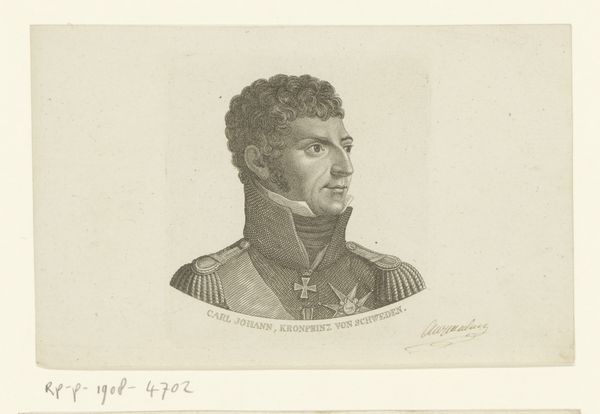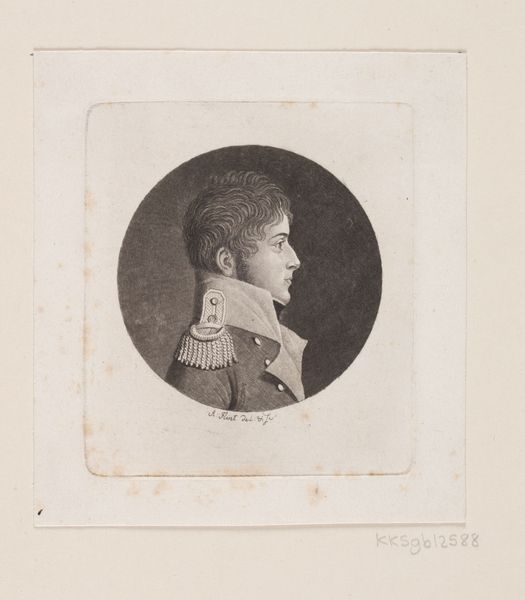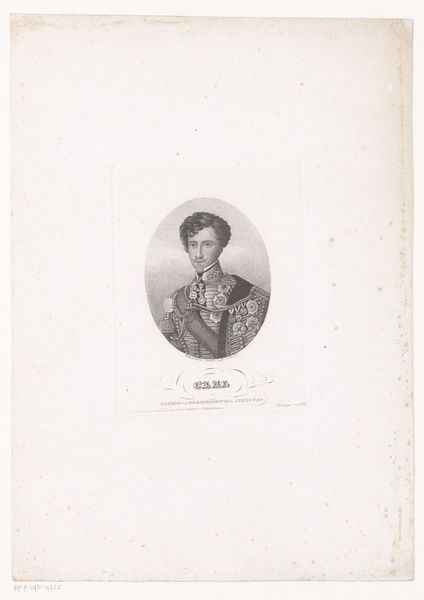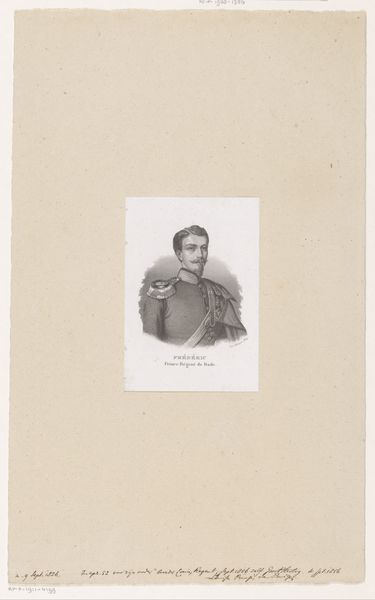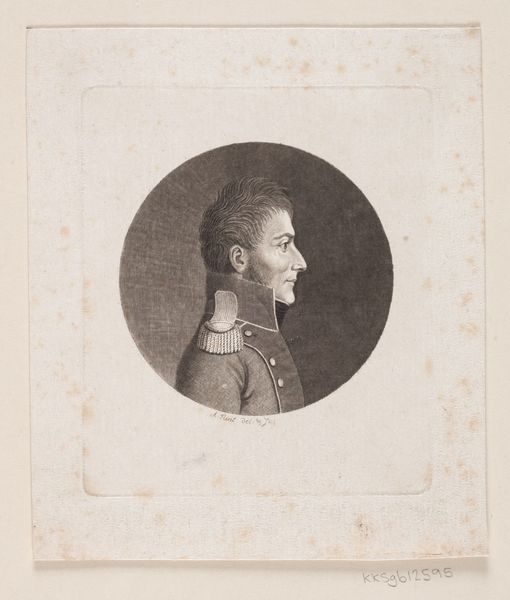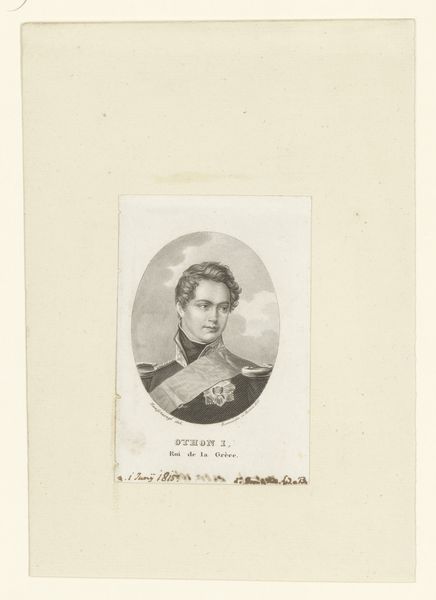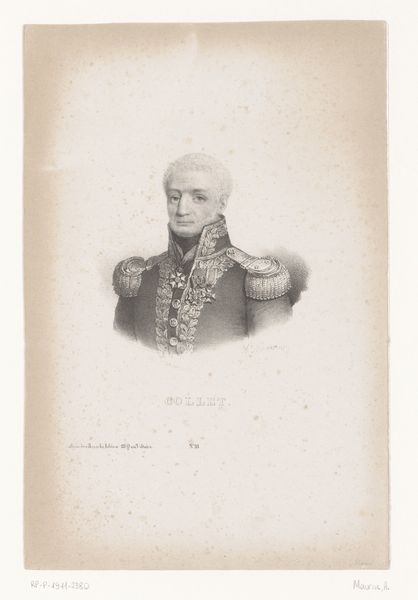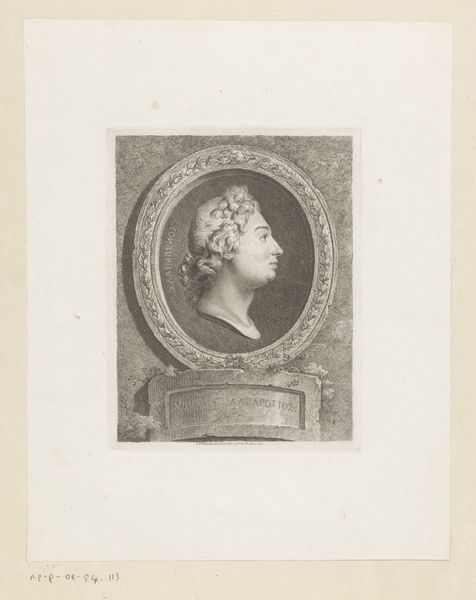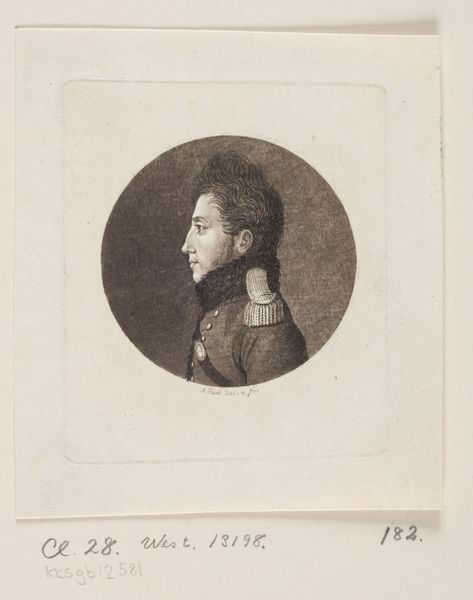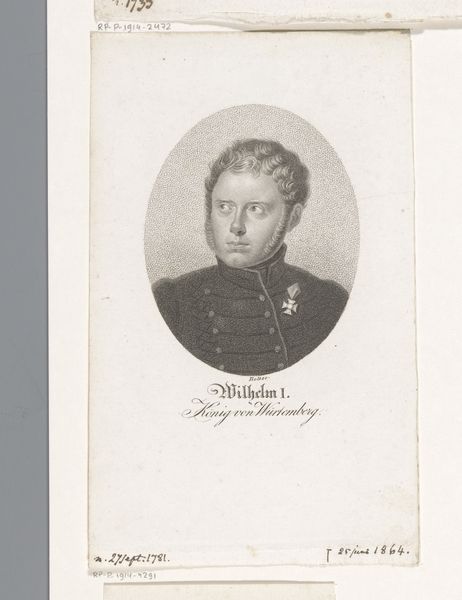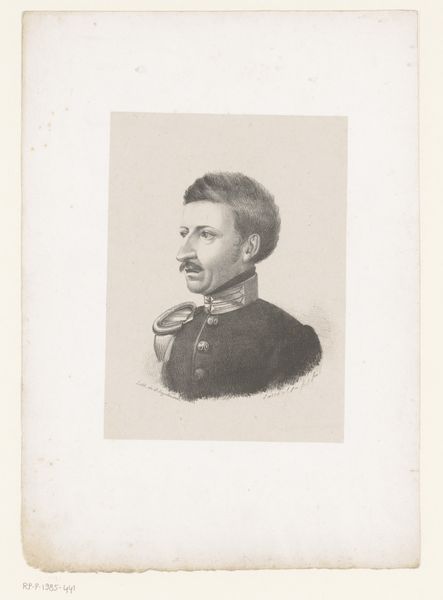
drawing, engraving
#
portrait
#
pencil drawn
#
drawing
#
pencil sketch
#
old engraving style
#
figuration
#
portrait reference
#
romanticism
#
line
#
portrait drawing
#
engraving
Dimensions: height 90 mm, width 88 mm
Copyright: Rijks Museum: Open Domain
Curator: This delicate engraving is entitled "Portret van Christian Gottfried Körner" and it's estimated to have been created sometime between 1775 and 1840 by Ernst Ludwig Riepenhausen. Editor: The first thing that strikes me is the somber quality despite the subject's youthful face. The shading around his eyes almost suggests a world-weariness, even melancholy. Curator: Precisely. Körner, as a prominent figure of the Romantic era, represents a pivotal intersection of intellectual and political thought. As a writer and close friend of Schiller, he navigated the complexities of his time and the piece is a great case study in examining the prevailing ideologies around identity, expression and duty in this period. Editor: Looking closely, I'm captivated by the meticulous detail Riepenhausen employs. Notice the subject's uniform. Beyond its immediate indication of social status, these visual signifiers spoke volumes. A powerful means of constructing and conveying the wearer's identity during a specific historical moment. Curator: It's fascinating how dress became codified as a signal, projecting aspirations towards virtue, patriotism, and intellectual pursuits. Körner, after all, would eventually become a war hero, with a narrative consciously woven into his identity. Editor: Consider the slight upward gaze of his eyes; its an age-old symbolic device – looking up is meant to imply yearning, introspection, possibly spirituality or ambition. It's quite affecting, isn't it? Curator: Yes, though I think such gestures cannot be separated from its period. Think about the performance of self that the Romantic era expected. Körner was deeply embedded in intellectual and artistic circles and keenly aware of the image he was crafting and conveying. Editor: Well, Riepenhausen seems adept at encapsulating the emotional nuance of his sitter. A somber testament to a complex man caught between the shifting currents of revolution and reformation. Curator: The way the Romantic aesthetic became indelibly entwined with notions of nationalism and individualism makes these historical readings so powerful, reminding us to look critically at identity construction. Editor: Exactly! A simple image offers endless pathways into broader historical and emotional landscapes.
Comments
No comments
Be the first to comment and join the conversation on the ultimate creative platform.
